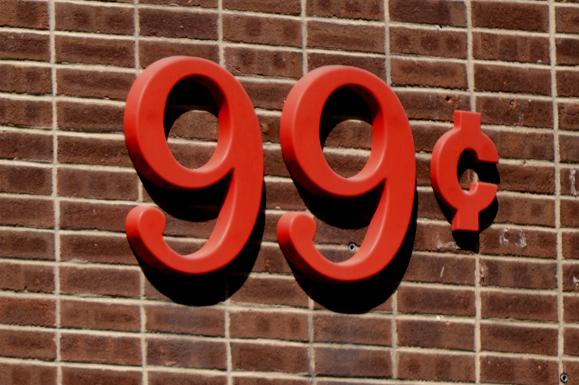What’s the real price of cheap? According to a new report, merchandise from dollar stores may not be as safe as you think.
In what is almost certainly a sign of America’s ever increasing economic disparities, dollar stores have become one of its fastest-growing retail phenomena. Over 21,500 stores across the nation rake in annual sales north of $36 billion. That’s big bucks, and an analysis from the Campaign for Healthier Solutions says that too many of them are being exchanged for toxic products that can make kids sick and the rest of us, too.
The organization tested a variety of merchandise from dollar stores and found that four out of five products contained at least one hazardous chemical in amounts above levels of concern. Half of the products had dangerous levels of two or more toxic tricksters, including polyvinyl chloride, phthalates, lead, chromium, tin, and antimony.
These chemicals have been suspected to cause a long list of issues – and while we can try to avoid them in our everyday products, trips to the dollar store will make that more difficult. That said, dollar stores remain an important source of affordable goods for many families. If you’re going to shop, here are some strategies for avoiding as many hazards as you can:
- Watch out for metal items, especially jewelry. Many of the toxins identified were heavy metals found in things like earrings and necklaces.
- Skip the vinyl and other flexible soft plastic products. They’re a leading source of phthalate and lead exposures.
- Be wary of off-brand products. Whenever possible, buy brands from a reputable retailer with high supply chain standards in place. Retailers that have such rules in place include Target, Walmart and Staples.
- Watch for choking hazards in party favors and toys, which aren’t always properly labeled. If it fits through a toilet paper roll, it’s too small.
- Read food ingredient panels carefully. Dollar store food may cost less because it uses filler ingredients to drive down cost. If a product contains something on the label that doesn’t sound like food, it’s probably not a good deal.
- Keep an eye on expiration dates. Most dollar stores get their stock from closeout and overstocked merchandise that’s been sitting around for awhile.


